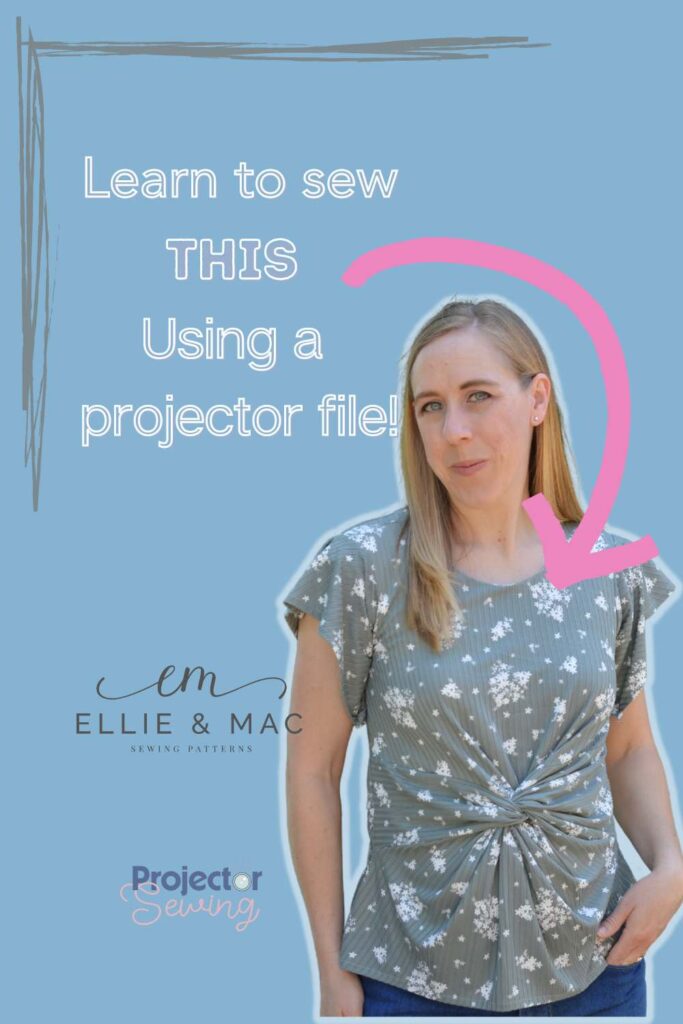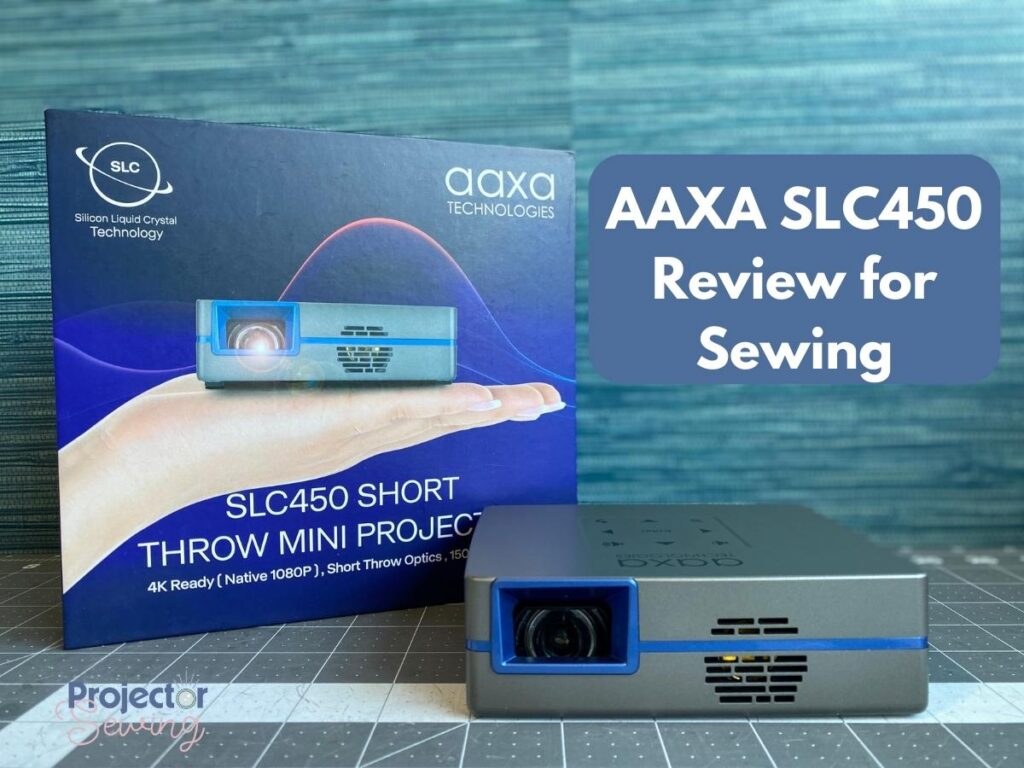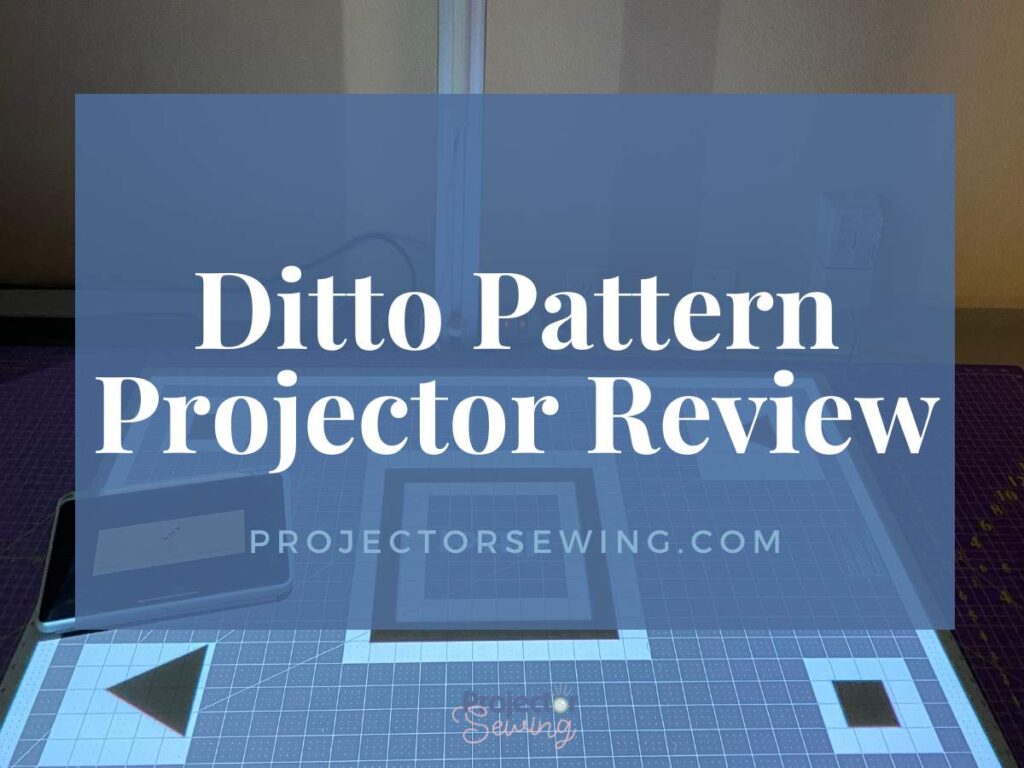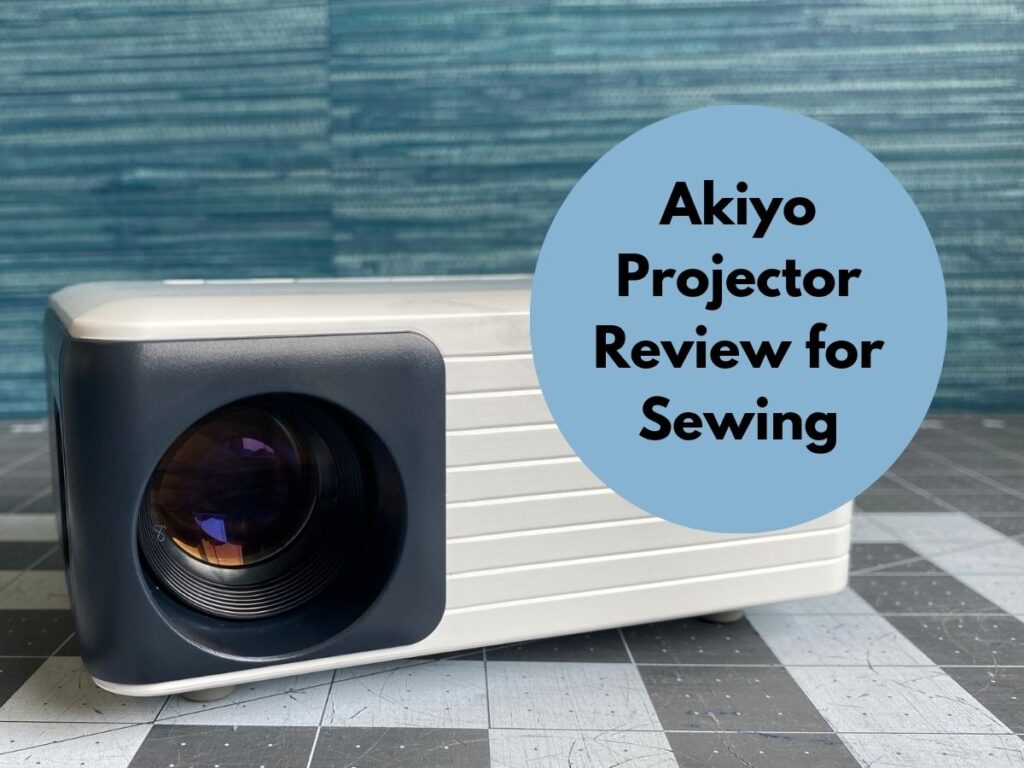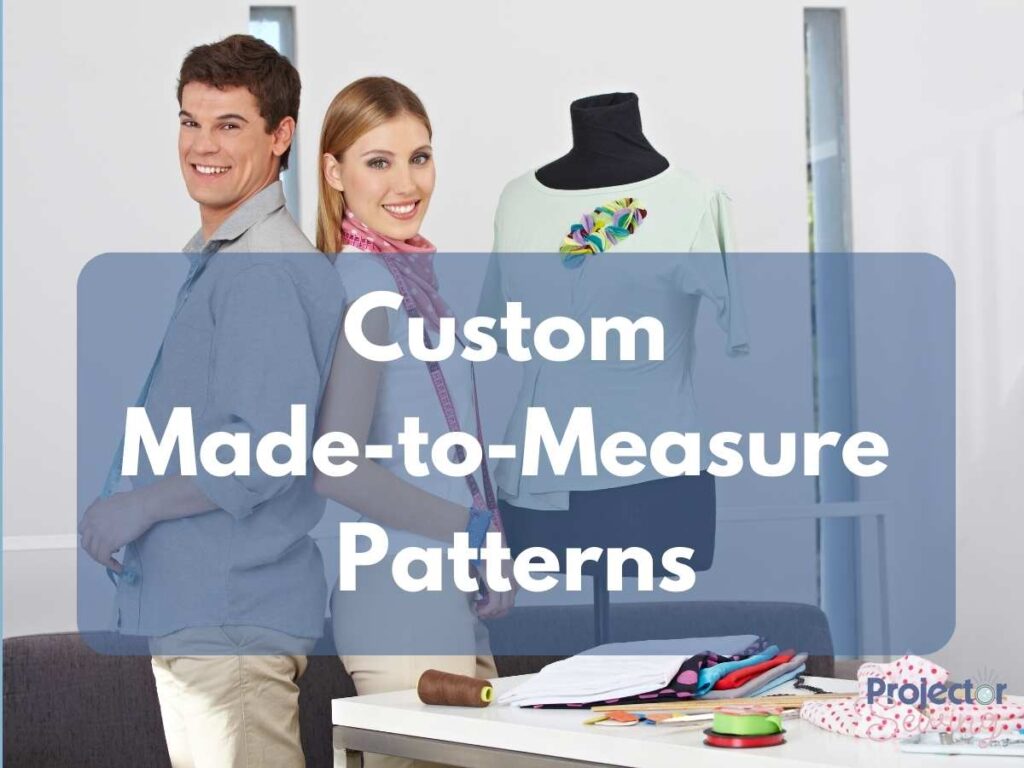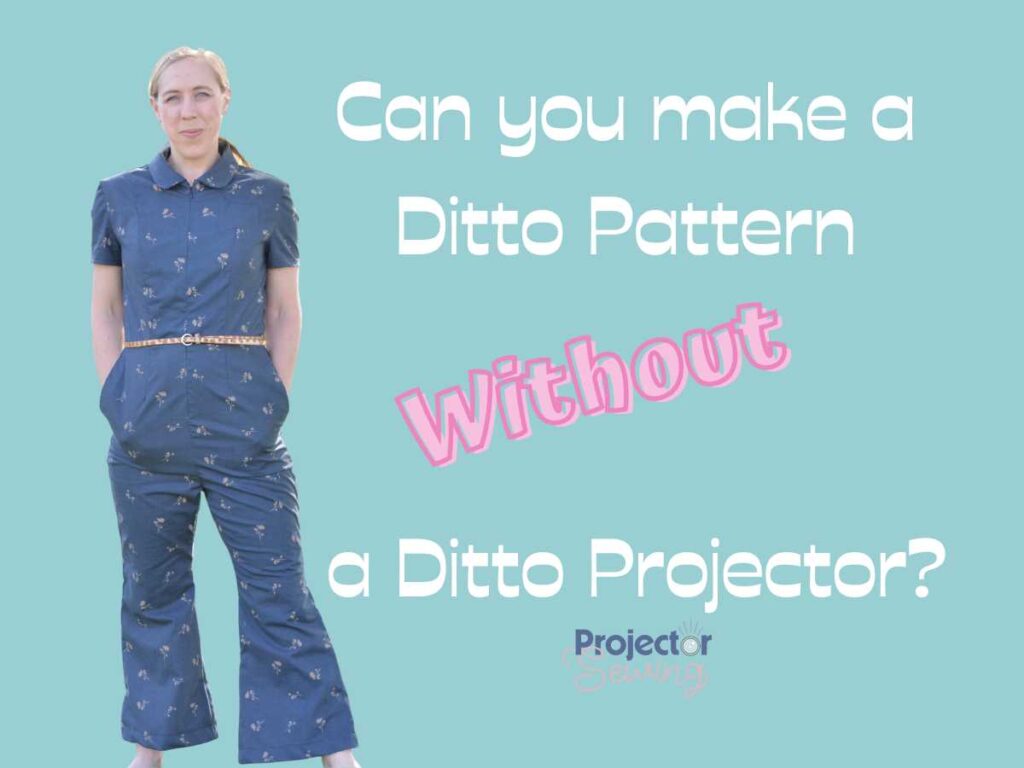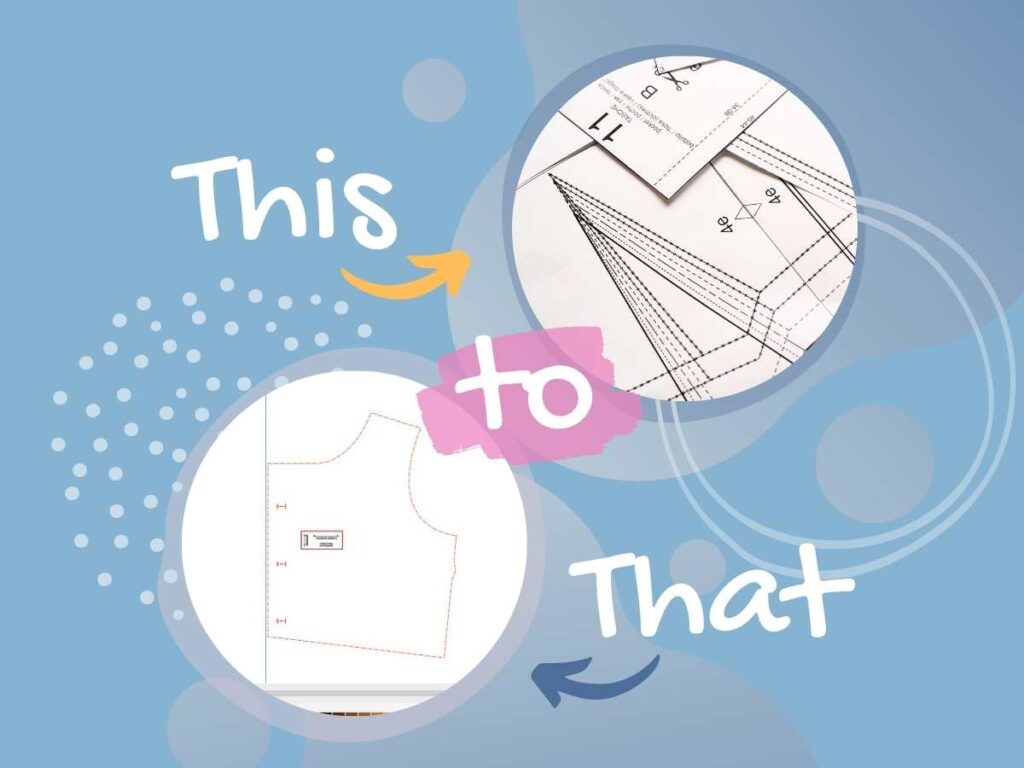*This post may contain affiliate links and we may earn a small commission if you click on them.
There is something so satisfying about being able to cut and sew a beautiful top or dress in little time! What’s even better is going directly from the decision “I want to sew” to cutting out fabric in the click of a button! With an Ellie and Mac projector file you can do just that!
This week I projected, graded, cut, and sewed this beautiful Heart and Soul Twist top in two sessions of sewing. Ellie and Mac sent me this beautiful pattern to test out for you and the projector sewing community!
If you are skeptical about whether you need to jump on the projector sewing journey, let me share with you everything I did to make this perfect-fitting Ellie and Mac Heart and Soul Twist top using a projector!
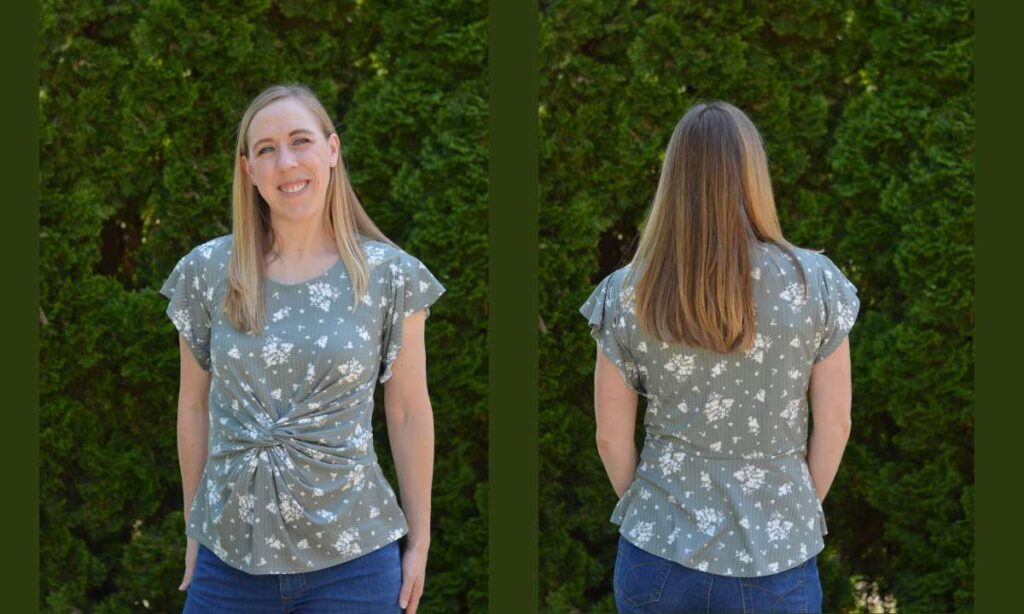
Ellie and Mac has been creating beautiful, beginner-friendly, and affordable patterns since 2012. I found Ellie and Mac early on in my sewing journey.
The staff is so friendly and kind and always keeps the customer in mind. When you buy a pattern and interact with them, you feel like you are a part of the family!
In addition to providing amazing print-at-home PDF patterns, Ellie and Mac was quick to adopt projector-friendly files when customers shared their desire for using a projector for sewing.
Now, you will find that most (if not all) of the patterns available for purchase include a projector-file format in addition to A0, and Letter/A4 sizes.
But, what exactly is a “PDF projector file” and how do you use it?
What is Projector Sewing?
Purchasing a PDF pattern at home is convenient and puts a variety of patterns at our fingertips. The styles are on-trend and fun! Instructions for PDF patterns are often impressive with photos and videos. However, printing PDF patterns is not necessarily an improvement over tissue paper patterns.
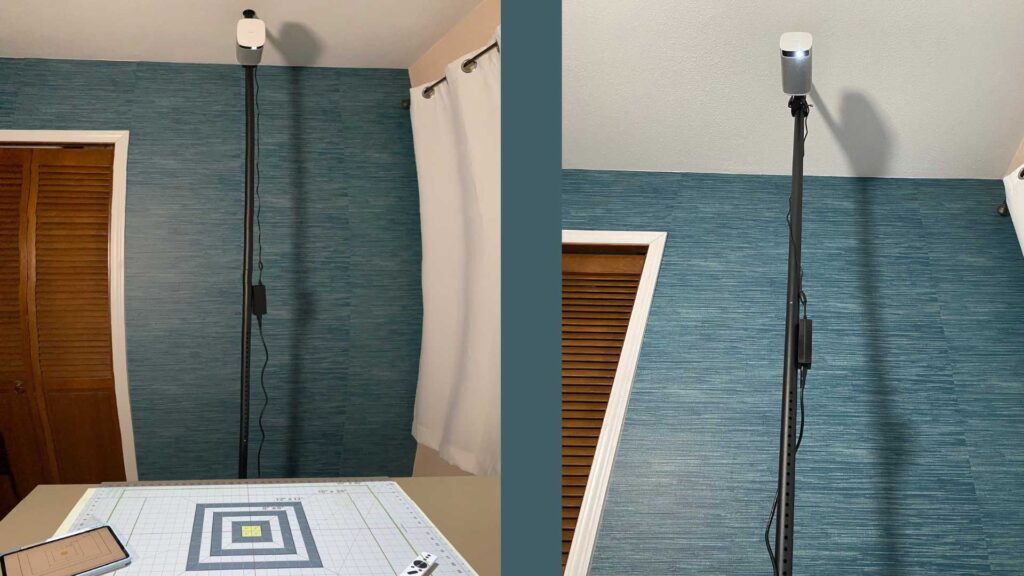
The printable Heart and Soul Twist top pattern has over 50 pages, if you print the letter-sized file in all sizes. On my HP printer, that would cost me 10¢ per page in ink, $1 in paper, and a few minutes to print. Then, it would take another 30 minutes to an hour to tape or glue the pattern pieces together.
Over a year of sewing for myself and my family, I found myself paying over $100 in ink and paper and COUNTLESS hours preparing patterns.
As a mother and business owner, my sewing time is very limited. While I was able to get my TV watching in while taping patterns together, I didn’t get a lot of time to do what I loved, SEW!
There had to be another “more efficient” way!
In 2021, I bought my first “sewing” projector for $80 (less than the cost of new ink!) and I haven’t looked back!
So, whether you sew for fun or for business, the time savings alone is worth it in my opinion! AND there is a projector option for many different budgets!
Projector sewing is using a home entertainment projector (like used for movies) to project a pattern directly onto the fabric for cutting.
A PDF projector file is a single-page pattern file optimized to be viewed on a projector.
Alterations to patterns are made “on the fly”, by tracing the pattern onto paper and altering, or doing them digitally before projecting.
To learn more about sewing with a projector, take a glance at the HOME page and the “Get Started” page.
Or consider enrolling in the Complete Projector Confidence Course that will walk you step-by-step from choosing a projector to cutting out your first pattern!
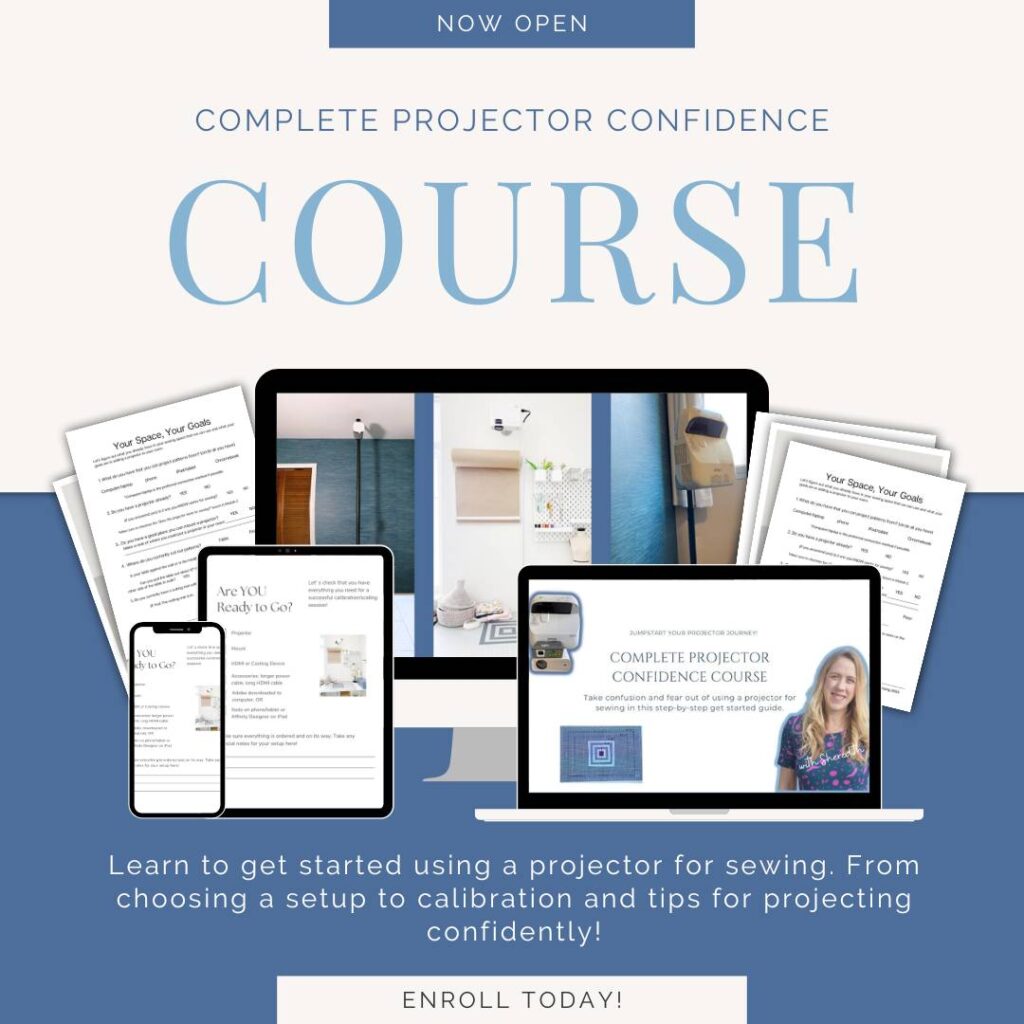
Today, I will show you step-by-step how I used the Ellie and Mac projector file for the Heart and Soul Twist top and my projector to get a beautiful top for any occasion!
Ellie and Mac Projector Files
Ellie and Mac offers optimized projector files for sewing! Ellie and Mac has strived to make top-quality projector files that make projecting a breeze! The quality of a projector file can make all the difference in your projector sewing experience. IYKYK! (if you know, you know!)
Ellie and Mac Sewing Patterns is among several indie pattern companies that began offering “projector files” to customers early on in the projector sewing movement. (Thank you!)
They have diligently worked over the past few years to create very user-friendly files. They include a “projector file” option for all of their new patterns and have even updated their older pattern files to include a projector file option.
All file types and instructions are included in a single purchase of a pattern. So, even if you bought patterns before you started sewing with a projector, you can go back to your account and download the “projector file” for the patterns you own!
No waiting for a printer to print the patterns, taping or gluing pattern pieces together, then tracing or cutting out your size BEFORE going to fabric!
See what makes Ellie and Mac projector files great.
Ellie and Mac Projector Files Feature:
- Thick pattern lines
- Dark-solid lines
- Layered sizes
- 1in and 4cm calibration layer options
- All grainlines going in the same direction
- Large text
- Pattern pieces “unfolded”
- Fold lines marked
- Large margins for scrolling room
All of these features combine to create an enjoyable sewing experience when projecting patterns. The layers allow you to turn on only the size(s) that you need in the moment. Large text and thick lines make the pattern pieces easy to see and follow. Unfolded pattern pieces allow you to choose to cut on the fold or not. The large scrolling room helps when you are moving the pattern pieces on your cutting table to the location you want.
The Ellie and Mac projector files have them all!
Choosing a Size and Fit Alterations
Have you wondered if you are choosing the right size for you? Or are you unsure how to make pattern adjustments to perfectly fit your unique beautiful body?
Ellie and Mac pattern instructions walk you through step-by-step how to choose a pattern size and decide if you need to make any pattern adjustments. Then, they will show you how to make the adjustments necessary for your shape.
I love the videos they provide and link to directly in the pattern instructions. Following these, even beginners can adjust their patterns to the perfect fit!
My size on the Heart and Soul Twist top is as follows: upper bust-small, bust-small, waist-large, and hips-small.
My side waist measures 9 inches and the pattern is drafted for an 8 inch side waist.
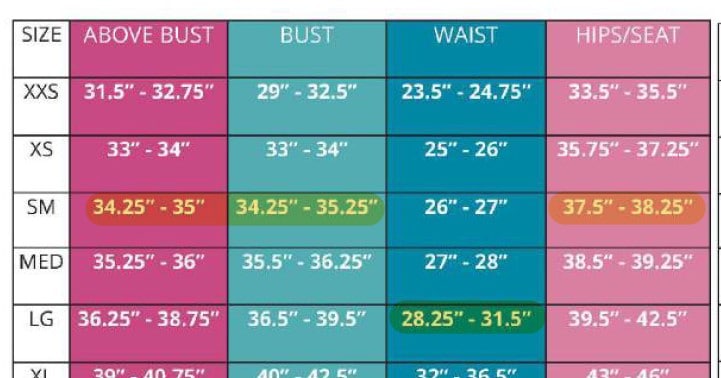
Since this pattern is made out of stretch knit fabric, if your measurements are not far off you may choose to just go by your upper bust measurement and not make any adjustments. But, I’d always make a test piece first!
The alterations for the first piece I made was to grade out the waist at the twist only. This is the sage green knit fabric. I liked the fit, but decided to sew another one up that I graded at the twist waist and lengthen the side waist by 1”. I will show you how I did these alterations in the next section!
Looking at the Heart and Soul Twist top, you may be intimidated at first! Even I did a double-take at first! But, don’t be!
It is easier than it looks!
Dianna from Ellie and Mac creates great tutorial videos for showing you how to do the twist and sew it up! The videos and tutorial will make the steps clear for every level of sewist!
Making Alterations to a Projector File Pattern
I know what you are thinking! How in the world can you make pattern adjustments when you are projecting the pattern onto fabric?! Trust the process! This works!
There are several methods for making necessary pattern adjustments when using a projector. Choose a method that you are most comfortable with and learn that!
Method 1: Trace the pattern onto paper and make the adjustments just as you would on a paper pattern. This method may be what a beginner is most comfortable with and the easiest for those just transitioning into projector sewing. It still saves time because you are not printing out the pattern.
Method 2: For some simple alterations, “On the Fly” is the way to go. This means you might project more than one size at a time and grade with cutting the fabric. I use this often for children’s clothes and straightforward alterations.
Method 3: Make alterations using a digital program such as Inkscape, Affinity Designer, or Adobe Illustrator. Learning a digital vector program can be intimidating at first, but I promise the more you get in there and practice, the easier it will be! Once you get the hang of digital pattern alterations, you will never go back. IMO it is MUCH faster to do digital alterations that paper!
Learn more about grading options in this article on How to Grade Patterns.
I will be demonstrating both “on the fly” and digital editing in Affinity Designer.
“On the Fly” Grading Heart and Soul Twist Top
As mentioned about, I need to grade the projector file pattern from a size small to a size large in the waist. The only place I really need to grade is right at my waistline.
For the Heart and Soul Twist top, adding side length to the twist is a little bit more involved and harder to do “on the fly”. I chose not to increase the side length and see how it turned out!
First, I projected the size small. I decided to cut a straight small through the top, bust, and under bust area and only grade in the waist section. The waist section on the twist top is included on the “twist” parts of the pattern highlighted in red.
When I got to the twist “waist”, I turned on the large-size layer too. Then, I blended from the small to the large in the center of the twist. This gave me the extra room in the waist area that I needed.
On a simple T-shirt or top without a twist, you would mark the large point on the waist and grade to that point.
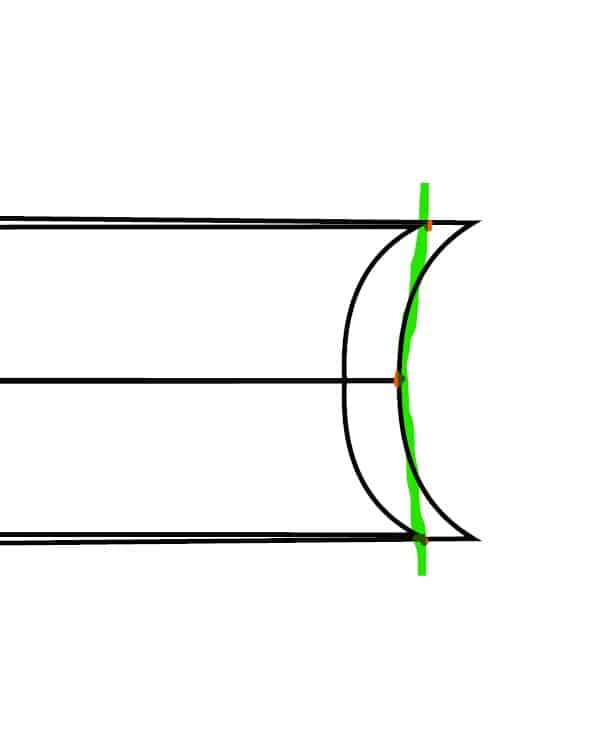
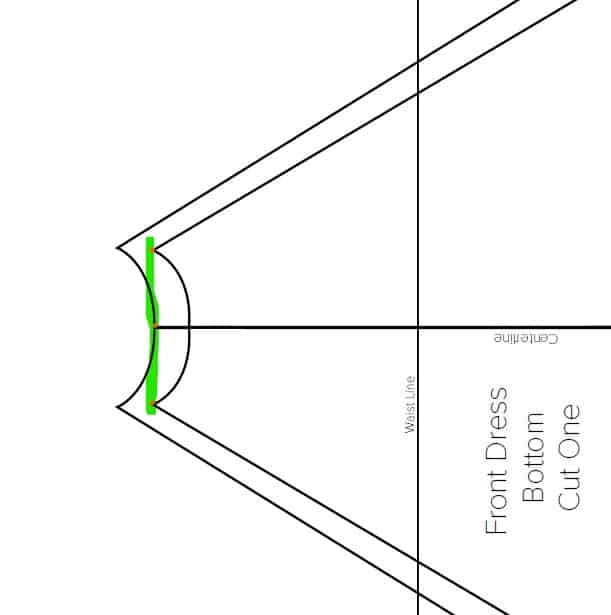
Using Affinity Designer to Grade and Add Length
Using Affinity Designer is my preferred method for pattern alterations. Not only is it easy to “undo” any mistakes, but you can save the modified pattern pieces to be used over and over again!
If this is your first time seeing someone make pattern alterations in a software program, don’t be intimidated! With a little bit of practice, it will become just like altering paper patterns!
The tools I used were the move tool, node tool, and knife tool. Learn these tools and you are well on your way!
I have several tutorials in Affinity Designer to get you started.
First, select the pattern sizes that you need. In my case, I needed the small and large. In the layers panel, I turned off all of the other sizes. In my view, I made sure I was in “inches” and also turned on the grid. I centered the pattern piece on an inch line.
Next, I turned off the large so I could first add 1” to the side waist. The Ellie and Mac instructions include how to add length to the side waist of this pattern. I followed the instructions to add the side length to the pattern in Affinity Designer.
Where the instructions tell you to “cut” with scissors, I used the knife tool. I then pivoted the pattern piece using the move tool with transform-origin enabled.
I used the grid and guidelines to measure the space that I needed to add.
Then, I turned on the large size to grade the waist out. I graded from the small to the large waist by moving the nodes as needed and smoothing the line. I duplicated the completed right side to the left side.
Repeat the process with the front bottom piece. Follow the instructions provided in the tutorial Ellie and Mac.
Don’t forget to add length to the back piece too!
To add length to the back piece, place nodes at the lengthen/shorten line. Select all the nodes below. With all the nodes in the bottom half selected, go the transform box. In the “Y” coordinate, type in +1 (or however much you are adding). The length will be increased!
Duplicate the right side to the left and you are ready to go!
“Pattern Tetris”: An Optional Step
Pattern Tetris or planning out your cuts is a completely optional step! Ellie and Mac already lays the pattern pieces with grainlines going in the same direction and it is easy to move your fabric as you cut out each pattern piece.
But, once you’ve started making digital adjustments, you’ll also see how easy it is to plan your cuts digitally and utilize all of your fabric!
There are several ways to plan your cuts. Most of the time I am using a rectangle piece of fabric that I just bought.
In this case I open Inkscape or Affinity Designer to play pattern Tetris. I was already using Affinity Designer to make digital pattern alterations, so naturally I decided to lay out my pattern pieces for cutting after making alterations.
For detailed instructions on how to plan your cuts and play “pattern Tetris.” You can follow the steps in this article on Pattern Tetris in Inkscape. It is easy to use the same principle in other programs.
Cutting and Sewing the Heart and Soul Twist Pattern
As I have stated before, Ellie and Mac produce instructions that are easy to follow, especially for beginners!
After my top was cut out, I was able to easily follow the instructions for creating the magical twist! They even have step-by-step video tutorials listed directly in the instructions for those that prefer video!
Clear photos are used in each step and the text is easy to understand! In fact, even though this shirt looks complicated, I was able to sew it up in practically no time at all!
If you haven’t tried out the Ellie and Mac Heart and Soul Twist top because it looked complicated, I suggest you give it a try! It is flattering on many different body types!
My favorite part of the Heart and Soul Twist top is the angel sleeves! They are beautiful and cool in warmer weather. The shirt is dress or casual and VERY comfortable!
Definitely give it a try!
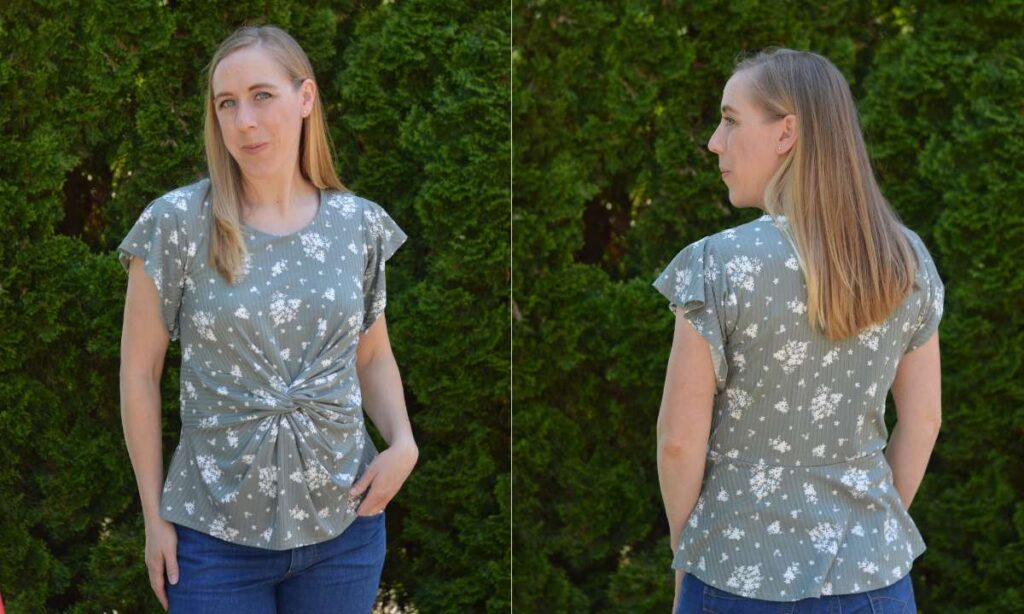
Conclusion
Once you start projector sewing with Ellie and Mac projector file patterns, you will not want to go back! Don’t be intimidated to get started.
From this demonstration, you can see that anything you did with paper patterns is possible with projector files!
There are many resources here on this website to walk you through choosing a projector and getting it set up, including the Complete Projector Confidence Course!
Choosing great projector files, like the ones offered by Ellie and Mac, make the process of projector sewing smooth and enjoyable.
Reignite your passion for sewing by learning this fun skill and get back to sewing instead of wasting time, money, and paper!
